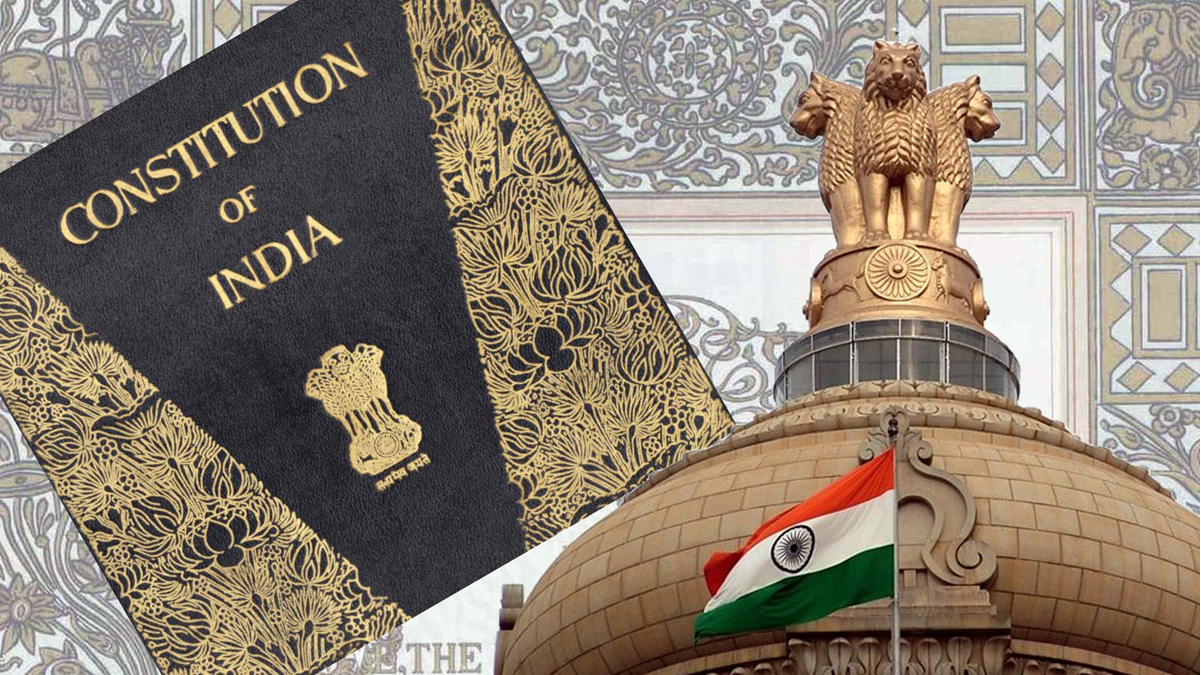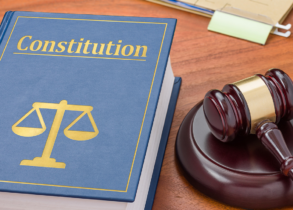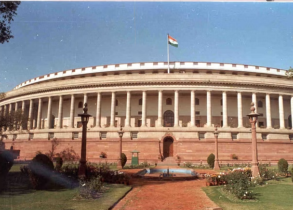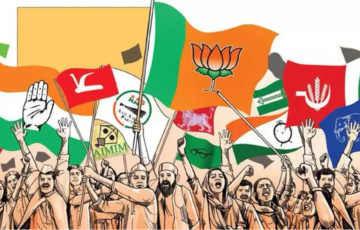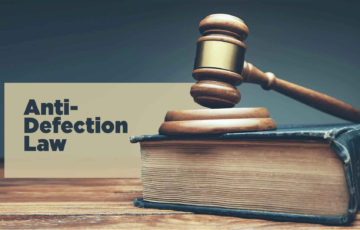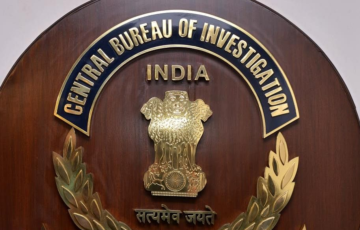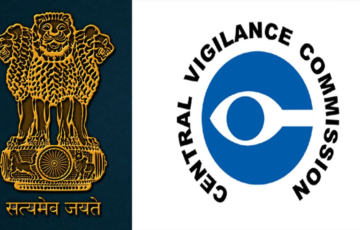BASIC STRUCTURE OF THE CONSTITUTION
Introduction
- The “Basic Structure Doctrine” is a pivotal and transformative concept in the constitutional jurisprudence of India. It refers to a doctrine established by the Supreme Court of India, which holds that there are certain core principles and features of the Indian Constitution that are beyond the reach of the amending power of the Indian Parliament. In other words, these foundational principles cannot be altered or abrogated by constitutional amendments.
- The concept of the Basic Structure Doctrine emerged through a series of landmark judgments by the Indian Supreme Court, with the most notable being the case of Kesavananda Bharati v. State of Kerala (1973). This case marked a watershed moment in Indian constitutional history and set the precedent for the doctrine.
What is the Doctrine of Basic Structure?
- The “Basic Structure Doctrine” is a legal principle established by the Supreme Court of India that asserts that there are certain fundamental features or “basic structure” elements of the Indian Constitution that cannot be altered or destroyed through amendments by the Parliament, even if the amendments are made through the procedures outlined in Article 368 of the Constitution. These basic structure elements form the core framework of the Constitution and are considered essential to its identity and character.
Elements of Basic Structure
- The concept of the “Basic Structure Doctrine” in the Indian Constitution holds that there are certain core elements or features of the Constitution that are considered sacrosanct and cannot be altered or destroyed by amendments, even if such amendments are made following the procedures outlined in Article 368 of the Constitution. While the list of elements that constitute the basic structure is not explicitly defined in the Constitution, various Supreme Court judgments have identified key components. Some of the prominent elements of the basic structure doctrine:
- Supremacy of the Constitution: The Constitution is the supreme law of the land, and all other laws and authorities must conform to it.
- Sovereign, Democratic, and Republic Nature: India is a sovereign nation with a democratic and republican form of government.
- Secular Character: The Constitution establishes India as a secular state, meaning there is no official state religion, and individuals have the freedom to practice and propagate any religion.
- Separation of Powers: The Constitution mandates a separation of powers between the legislature, executive, and judiciary to prevent any one branch from becoming too powerful.
- Federal Character: India is a federal state with a division of powers between the central government and state governments.
- Unity and Integrity of the Nation: The Constitution emphasizes the unity and integrity of the nation.
- Welfare State (Socio-economic Justice): The Constitution commits to creating a welfare state that promotes socio-economic justice and the well-being of its citizens.
- Judicial Review: The judiciary has the authority to review and strike down actions of the executive and legislative branches that are inconsistent with the Constitution.
- Fundamental Rights: Protection of fundamental rights and freedoms of individual citizens is a fundamental aspect of the Constitution.
- Parliamentary System: India follows a parliamentary form of government where the executive is accountable to the legislature.
- Rule of Law: The Constitution establishes that no one is above the law, and all individuals and institutions are subject to it.
- Harmony and Balance between Fundamental Rights and Directive Principles: Balancing fundamental rights with directive principles to achieve social and economic justice is crucial.
- Principle of Equality: The Constitution guarantees equality before the law and prohibits discrimination on various grounds.
- Free and Fair Elections: Democracy is upheld through free and fair elections.
- Independence of Judiciary: The judiciary must be independent to ensure justice and protect the Constitution.
- Limited Power of Parliament to Amend the Constitution: While Parliament can amend the Constitution, it cannot alter its basic structure.
- Effective Access to Justice: Access to justice for all citizens is a fundamental principle.
- Principles (or Essence) Underlying Fundamental Rights: The essence of fundamental rights cannot be violated, even if specific provisions are amended.
- Powers of the Supreme Court: The Constitution grants specific powers to the Supreme Court under various articles.
- Powers of the High Courts: Similar to the Supreme Court, high courts have specific powers under the Constitution.
- These elements collectively constitute the basic structure of the Indian Constitution. The Supreme Court has the authority to determine whether any constitutional amendment violates the basic structure, and if it does, such an amendment can be declared unconstitutional. The exact boundaries and components of the basic structure doctrine may continue to evolve through future court decisions.
Timeline for Evolution of Basic Structure
Pre-Golak Nath Era:
- Introduction of Article(s) 31A and 31B (1951): In 1951, the Indian Constitution was amended to introduce Article 31A and 31B. Article 31A created the 9th Schedule, which stated that any law included in it could not be challenged for violating Fundamental Rights as per Article 13(2) of the Constitution. Article 13(2) prohibited Parliament from drafting laws that abridge the rights conferred under Part III of the Constitution.
- Challenge to Articles 31A and 31B: A petition was filed in the Supreme Court of India challenging the validity of Article(s) 31A and 31B on the grounds that they abridged or took away rights guaranteed under Part III of the Constitution, contrary to Article 13(2). The petition sought to have these articles declared void.
- Shankari Prasad Singh Deo v. Union of India (1951): In this case, the Supreme Court ruled that the power to amend the Constitution, including the Fundamental Rights, was conferred under Article 368. It held that the word ‘Law’ in Article 13(2) did not include an amendment of the Constitution. The court made a distinction between Parliament’s legislative power and its power to amend or exercise constituent powers.
- Sajjan Singh v. State of Rajasthan (1965): Subsequently, the scope of constitutional amendments was further challenged in the case of Sajjan Singh v. State of Rajasthan. The case dealt with the validity of the 17th Constitutional Amendment, which added approximately 44 statutes to the 9th Schedule. While all judges agreed with the decision of Shankari Prasad, for the first time, in the concurring opinion by Justices Hidyatullah and Mudholkar, doubts were raised on the unfettered power of Parliament to amend the Constitution and curtail the fundamental rights of citizens.
Golak Nath v. State of Punjab
- The Golak Nath v. State of Punjab case was a significant legal milestone in the context of the Indian Constitution and its interpretation.
- Case Background:
- The case involved three writ petitions, with the first one filed by the children of Golak Nath. They challenged the inclusion of the Punjab Security of Land Tenures Act, 1953, in the Ninth Schedule of the Constitution.
- The other two petitions challenged the inclusion of the Mysore Land Reforms Act in the Ninth Schedule.
- The case was heard by an 11-judge bench of the Supreme Court.
- Key Points and Rulings:
- Fundamental Rights Beyond Amendment: By a majority decision of 6:5, the Supreme Court ruled that fundamental rights were outside the purview of constitutional amendments. This meant that Parliament could not amend the Constitution to curtail or abridge fundamental rights.
- Basis of the Decision: The Court based its decision on several key points:
- It emphasized that the power of Parliament to amend the Constitution is not derived from Article 368 (which deals with the procedure of amendment) but from Article 245, read with Entry 97 of List I of the Constitution.
- The Court clarified that the term ‘law’ under Article 13(2) includes within its meaning an amendment to the Constitution. Therefore, any amendment that violated fundamental rights was deemed void.
- The argument that the power to amend the Constitution is a sovereign power, immune from judicial review, was rejected by the Court.
- Prospective Effect: While the Golak Nath case declared that fundamental rights were beyond the scope of constitutional amendments, the Court did not declare the 1st, 4th, and 17th Amendments (which had curtailed fundamental rights) invalid. Instead, the ruling was given prospective effect. This meant that no further amendments could be brought into the Constitution that violated fundamental rights. However, the Court declared the cases of Shankari Prasad and Sajjan Singh to be bad in law to the extent that Article 13(2) does not include a constitutional amendment under Article 368.
- The Golak Nath case had a profound impact on the interpretation of the Indian Constitution, leading to significant debates and discussions on the balance between the amending power of Parliament and the protection of fundamental rights. It set the stage for the subsequent development of the basic structure doctrine, which further defined the limits of constitutional amendments in India.
24th Constitutional Amendment
- The 24th Constitutional Amendment, enacted in response to the Golak Nath case, aimed to restore the power of Parliament to amend the Constitution freely and clarify the scope of amendment. The major changes brought about by the 24th Amendment are:
- Amendment to Article 13(4): A new clause (4) was added to Article 13. It stated that ‘nothing in this Article shall apply to any amendment of this Constitution made under Article 368.’ This clause made it explicit that the provisions of Article 13, which deal with the abridgment of fundamental rights, would not apply to constitutional amendments made under Article 368.
- Amendment of the Marginal Heading of Article 368: The marginal heading of Article 368 was changed from ‘Procedure for amendment of the Constitution’ to ‘Power of Parliament to amend the Constitution and Procedure, therefore.’ This change emphasized that Article 368 not only dealt with the procedure for amendment but also vested Parliament with the power to amend the Constitution.
- Addition of Article 368(1): Article 368 was provided with a new sub-clause (1), which read, ‘notwithstanding anything in this Constitution, Parliament may, in the exercise of its Constituent Power, amend by way of addition, variation, or repeal any provision of this Constitution in accordance with the procedure laid down in this Article.’ This sub-clause explicitly acknowledged the Constituent Power of Parliament to amend the Constitution.
- Amendment of Language Relating to Presidential Assent: The language regarding the President’s role in assenting to constitutional amendments was modified. It changed from ‘it shall be presented to the President who shall give his assent to the Bill and thereupon’ to ‘it shall be presented to the President for his assent, and upon such assent being given to the Bill.’ This change clarified the process of Presidential assent.
- Addition of Article 368(3): A reassuring clause (3) was added to Article 368, which further clarified that ‘nothing in Article 13 shall apply to any amendment made under this Article.’ This clause reinforced that the provisions of Article 13, which pertain to fundamental rights, would not affect constitutional amendments made under Article 368.
- The 24th Constitutional Amendment effectively reasserted the authority of Parliament to amend the Constitution, including provisions related to fundamental rights, while also making it clear that such amendments were not subject to the restrictions of Article 13. This amendment was a response to the perceived limitations placed on Parliament’s amending power by the Golak Nath case and aimed to strike a balance between protecting fundamental rights and allowing for constitutional amendments.
Kesavananda Bharati v. State of Kerala
- The Kesavananda Bharati v. State of Kerala case is a landmark in Indian constitutional history. It involved a challenge to the Kerala Land Reforms Act, 1963, which was placed under the Ninth Schedule by the 29th Amendment of the Constitution. The petitioner was allowed to challenge not only the 29th Amendment but also the validity of the 24th and 25th Amendments.
- Key highlights and outcomes of the Kesavananda Bharati case:
- Overruling of Golak Nath: In a historic judgment delivered by a 13-judge bench, with a majority of 7:6, the court overruled the earlier Golak Nath case. It held that the power of Parliament to amend the Constitution is extensive, extending to all articles. However, this power is not unlimited and cannot be used to destroy certain basic features or the framework of the Constitution.
- Validity of the 24th Amendment: The court upheld the validity of the 24th Amendment, stating that it merely stated what was already implicit in the Constitution. It clarified that Article 368 always included the power and procedure to amend the Constitution.
- Basic Structure Doctrine: While the judges did not explicitly define what constitutes the basic structure of the Constitution, they provided an illustrative list of elements that may constitute the basic structure
Indira Gandhi v. Raj Narain (1975):
- This case involved an appeal by Indira Gandhi against the Allahabad High Court’s decision invalidating her election as Prime Minister.
- During the pendency of the appeal, the 39th Amendment was enacted, which declared that no court had jurisdiction over election disputes of the Prime Minister.
- The Supreme Court, relying on the Kesavananda Bharati decision, affirmed that democracy was an essential feature of the Constitution and part of the basic structure.
- The court added two additional features to the list of the basic structure: the Rule of Law and the power of Judicial Review.
Minerva Mills Ltd. v. Union of India (1980):
- In this case, the Supreme Court provided further clarity on the doctrine of the basic structure.
- It emphasized that the power of amendment under Article 368 was limited, and the exercise of such power could not be absolute. A limited amending power was considered a part of the basic structure of the Constitution.
- The court also held that the harmony and balance between fundamental rights and directive principles were essential elements of the basic structure. Anything that disrupted this balance would be a violation of the basic structure doctrine.
L. Chandra Kumar v. Union of India (1997):
- This case dealt with the issue of transferring the power of judicial review from the judiciary to administrative tribunals.
- The Supreme Court reaffirmed that the power of judicial review under Article 32 (Supreme Court) and Article 226 (High Court) was an integral part of the basic structure doctrine.
- The court held that these powers could not be diluted by transferring them to administrative tribunals. This decision affirmed the judiciary’s role in upholding the basic structure of the Constitution.
These cases collectively contributed to the development and reinforcement of the basic structure doctrine in India, emphasizing the limits on the amending power of Parliament and the importance of preserving certain fundamental features of the Constitution. The doctrine has played a crucial role in safeguarding the core principles and values of the Indian Constitution.
Conclusion
- The basic structure doctrine is a key principle in the Indian Constitution, balancing flexibility for adaptability with protection of fundamental principles. It ensures that amendments do not undermine the constitution’s essence. The doctrine has been instrumental in preserving the core values and principles of the Indian Constitution and remains a guiding principle for courts in determining the validity of constitutional amendments. As the legal landscape evolves, the doctrine will likely adapt to address new challenges while upholding the fundamental ideals of the Indian Constitution.
UPSC PREVIOUS YEAR PRELIMS QUESTION
1. Which one of the following statements best reflects the Chief purpose of the ‘Constitution’ of a country? (2023)
1. It determines the objective for the making of necessary laws.
2. It enables the creation of political offices and a government.
3. It defines and limits the powers of government.
4. It secures social justice, social equality and social security
2. Consider the following statements: (2023)
1. According to the Constitution of India, the Central Government has a duty to protect States from internal disturbances.
2. The Constitution of India exempts the States from providing legal counsel to a person being held for preventive detention.
3. According to the Prevention of Terrorism Act, 2002, confession of the accused before the police cannot be used as evidence.
How many of the above statements are correct?
a) Only one
b) Only two
c) All three
d) None
3. Which one of the following factors constitutes the best safeguard of liberty in a liberal democracy? (2021)
(a) A committed judiciary
(b) Centralization of powers
(c) Elected government
(d) Separation of powers
4. In the context of India, which one of the following is the characteristic appropriate for bureaucracy? (2020)
1. An agency for widening the scope of parliamentary democracy
2. An agency for strengthening the structure of federalism
3. An agency for facilitating political stability and economic growth
4. An Agency for the implementation of public policy
One common agreement between Gandhism and Marxism is (2020)
(a) the final goal of a stateless society
(b) class struggle
(c) abolition of private property
(d) economic determinism

